A River's Tale - 1 Class 4 Worksheet EVS Chapter 13
Q1: Fill in the Blanks
(i) In April and May the water level in the river is at _____.
Ans: In April and May the water level in the river is at the minimum.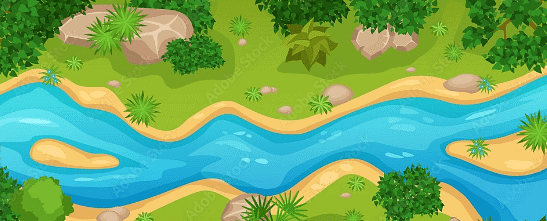
(ii) In summer, the water level of the river _____.
Ans: In summer, the water level of the river decreases.
(iii) We get drinking water from _____.
Ans: We get drinking water from the river.
(iv) When there is a change in colour of the water with a bad smell then it is _______ water.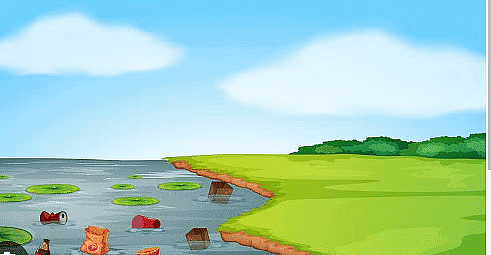 Ans: When there is a change in colour of the water with a bad smell then it is Dirty water.
Ans: When there is a change in colour of the water with a bad smell then it is Dirty water.
(v) Water appears to be _____. However, pure water has a slight _____ colour.
Ans: Water appears to be colourless. However, pure water has a slight Blue colour.
(vi) Overflowing rivers causes _____.
Ans. Overflowing rivers cause Floods.
Q2: True and False
(i) Seawater is drinkable.
Ans: False
Sea Water is saline. So it is not drinkable.
(ii) Same amount of water is there in the rivers during the rainy season or in summer. 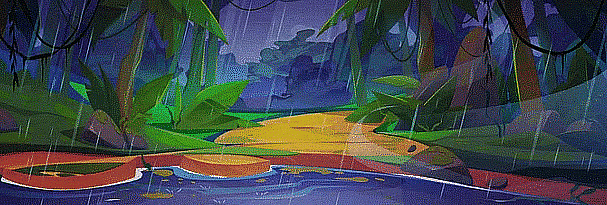
Ans: False
(iii) We should not wash our clothes in the river.
Ans: True
(iv)Water changes colour after it passes a city because some water is removed for use by people living in the city.
Ans: False
(v) One of the best ways to clean water is by boiling it.
Ans: True
Q3: Short Questions Answer
(i) By which method can we clean drinking water?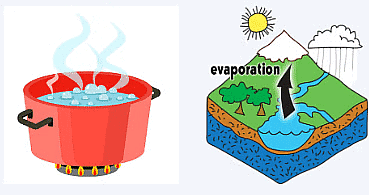
Ans: We can clean drinking water by Boiling or by the method of Evaporation.
(ii) Mention a few things that dissolve easily in water.
Ans: Sugar, salt, and coffee are soluble and dissolve easily in water.
(iii) What happens when a flood occurs?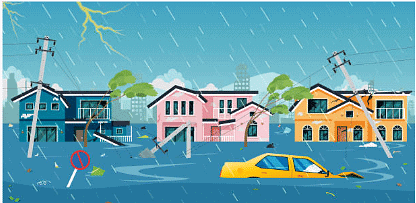
Ans: When a flood occurs there is a huge loss of human lives, causing damage to several properties, destroying crops, and livestock. Further, it causes damage to the roads, bridges and power plants.
(iv) Name different kinds of animals present in the river.
Ans: Fishes, Turtles, Catfish, Crabs, Crocodiles, Dolphins, and bacteria are also present in large numbers in river water.
(v) What kind of plant grows in rivers?
Ans: Algae, Duckweed, Kelp, Rush, Seaweed, Waterlily, etc., grow in rivers.
(vi) From the given figure, how many fishes are there inside the river?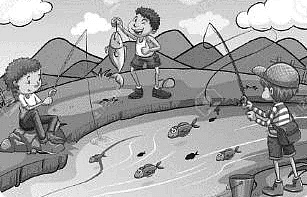
Ans: There are seven fish inside the river.
(vii) From the given figure, name the different animals in the picture.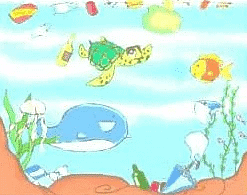
Ans: There are Six Fishes, One Turtle, and One Octopus.
(viii) When does Water become dirty?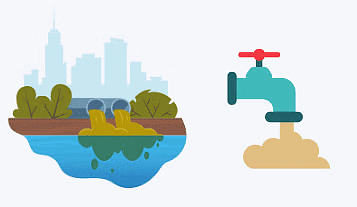
Ans: When different kinds of pollutants like chemical wastes from factories or household waste from different villages are thrown, enter the water they make it dirty.
(ix) Name a few birds that live near water.
Ans: Ducks, coots, cranes, dippers, and flamingos live near water.
(x) What amount of water in rivers do we have in the rainy season?
Ans: In the rainy season the water is at its maximum level.
Q4: Fill in the blanks.
(i) If many dead fish are found on the banks of a river, it means that the river water is polluted.
(ii) If we try to dissolve haldi in water, the water changes colour to yellow.
(iii) Wheat flour does not dissolve in water.
(iv) If oil leaks from a ship on the river, it may kill the fish in the river.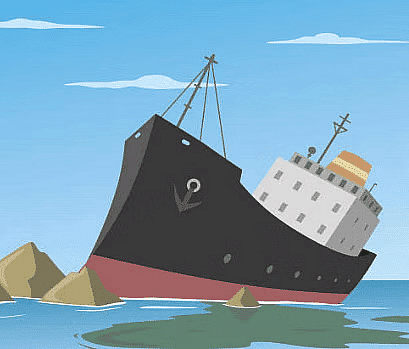
(v) Even if the water appears clean, it may not be alright to drink.
(vi) Rain source of fresh water.
(vii) The level of groundwater is decreasing in cities.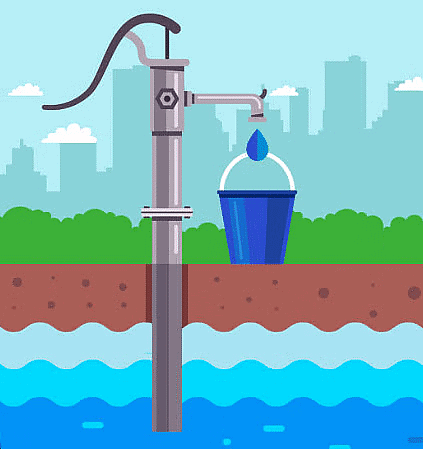
(viii) ORS stands for Oral Rehydration Solution.
(ix) The Ganga is a holy river of the Hindus.
(x) Boiling is the best way to clean dirty water.
Q5:Answer the following questions
(i) Give three reasons that will make river water impure and unfit for drinking?Ans: Pollution from industrial discharges, improper waste disposal, and contamination from agricultural runoff are three reasons that can make river water impure.
- Industrial Pollution: Discharge of industrial effluents containing chemicals, heavy metals, and toxic substances into rivers can contaminate the water. Industries often release pollutants such as mercury, lead, arsenic, and various harmful chemicals that are detrimental to human health.
- Agricultural Runoff: The use of fertilizers, pesticides, and herbicides in agriculture can lead to runoff into nearby rivers. Nitrogen and phosphorus from fertilizers, as well as pesticides and herbicides, can contribute to the growth of harmful algae, depleting oxygen levels in the water and producing toxins that are harmful to humans if ingested.
- Municipal and Urban Wastes: Improper disposal of municipal and urban wastes, including untreated sewage, garbage, and other pollutants, can contaminate river water. In many areas, inadequate wastewater treatment facilities and poor waste management practices contribute to the release of pathogens, organic matter, and nutrients into rivers. This contamination can lead to the spread of waterborne diseases.
(ii) What are two man-made sources of water?
Ans: Dams and reservoirs are human-built structures that help manage and store water for various purposes.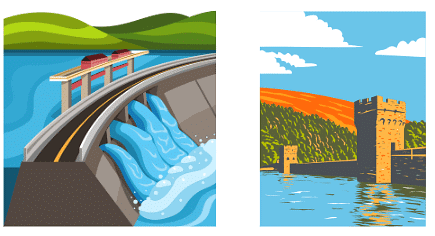
- Dams:
- Dams are big walls or barriers built across rivers or streams.
- They block the flow of water, creating a reservoir behind them.
- Dams can be made from materials like concrete or earth.
- Reservoirs:
- Reservoirs are large artificial lakes formed by dams.
- When a dam is built, it stops the natural flow of the river and causes water to accumulate behind it, forming a reservoir.
- These reservoirs store water for different uses.
Dams and reservoirs are artificial structures designed to control and store water for various human needs, including drinking water, electricity generation, flood prevention, agriculture, and recreational activities.
(iii) If we drink dirty water, what can happen to us?
Ans: Drinking dirty water can make us sick. Here's why:
- Harmful Chemicals: Sometimes, bad stuff from factories and farms can get into the water. This can include chemicals and metals that are really bad for our health. Drinking water with these can make us very sick, and it's like being poisoned.
- Stomach Issues: Dirty water can also have tiny germs like bacteria and viruses that can cause stomachaches, vomiting, and other stomach troubles and diseases like diarrhea.
- Mosquito Diseases: If water is not clean, mosquitoes can breed in it. Mosquitoes carry diseases like malaria, and if we drink water with mosquitoes in it, we might get sick too.
- Long-Term Problems: Drinking dirty water for a long time can cause serious health problems, like cancers or issues with our heart and skin.
To stay healthy, it's important to drink clean and safe water. If the water doesn't look clean or comes from an unknown source, it's better to avoid it or make sure to treat it before drinking.
Q6: Match the following
Match the items in Column A with information about them in Column B by drawing arrows.| Column A | Column B |
| Sand | dissolves in water |
| Boiling water | pollutes the water |
| Milk | has many fish when it is clean |
| Washing clothes | does not dissolve in water |
| River Water | makes it drinkable |
Ans:
| Column A | Column B |
| Sand | does not dissolve in water |
| Boiling Water | makes it drinkable |
| Milk | dissolves in water |
| Washing Clothes | pollutes the water |
| River Water | has many fish when it is clean |
|
52 videos|352 docs|54 tests
|
FAQs on A River's Tale - 1 Class 4 Worksheet EVS Chapter 13
| $1. What is the main theme of "A River's Tale"? |  |
| $2. Who are the key characters in the story "A River's Tale"? |  |
| $3. How does the river impact the environment in the story? |  |
| $4. What lessons can be learned from "A River's Tale"? |  |
| $5. How can we relate the story to real-life environmental issues? |  |

















